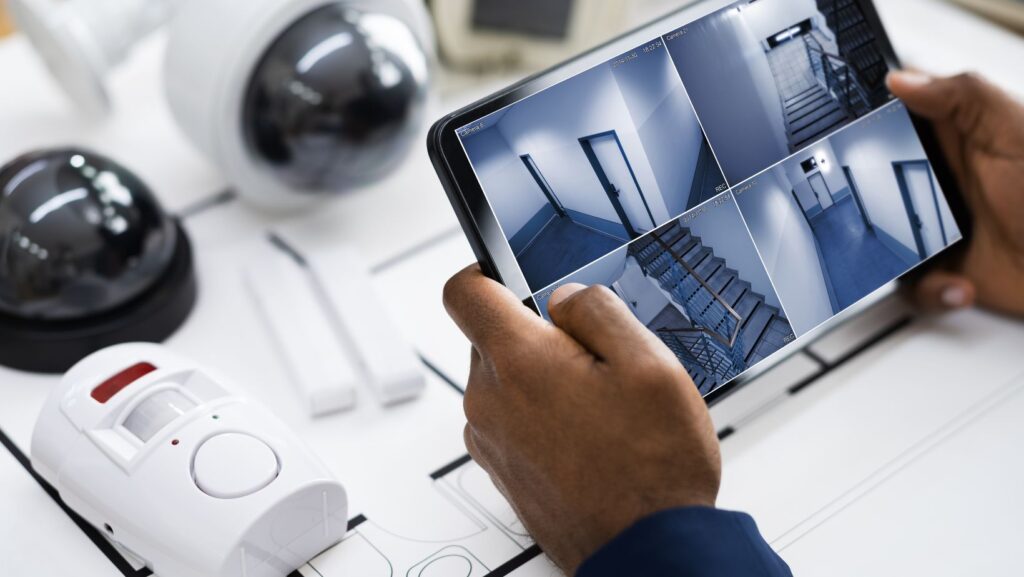You’ve invested in a top-notch home security system. You sleep soundly at night, confident that your family and possessions are safe. But how secure is your home, really?
Your Home Security is Great or is it
Think you’re protected because your home security is top-notch? Re-evaluating the setup might surprise you. Start by conducting a thorough assessment of the existing security measures. Look for potential gaps, weaknesses in the system, or areas where the digital security could be compromised. Even the most robust security system has its limitations.
Moving forward, list all devices connected to your system. You might think of the obvious – surveillance cameras, alarm systems, and digital locks. Don’t forget about home automation systems, including smart TVs and appliances. Hackers often target such devices, aiming at indirect security breaches.
Finally, remember, it’s not just the hardware that’s important. Regularly updating software and firmware patches enhances the safety quotient. And while maintaining and managing passwords may seem trivial, it greatly contributes to your overall home security. I recommend using password management tools to handle the task for you in a secure, fuss-free manner. Avoid simplistic or repetitive passwords. Couple these tactics with an understanding of cyber threats, and you’re on your way to securing your home effectively.
Technological Advances in Home Security

Knowledge is power, especially when it comes to your home’s security. As technology has progressed, so too have useful, innovative security tools. Biometric security systems, for instance, have become popular, using unique physical or behavioral traits to verify identity. These biometric systems can range from fingerprint readers to retina scanners, providing a high level of security.
Another significant advance is the advent of smart home devices. Security systems can now integrate with smart devices, enabling homeowners to monitor and control their security measures remotely. Examples include checking your security camera feed from your phone or controlling your home’s lighting to deter potential intruders.
Lastly, improvements in AI technology have paved the way for predictive analysis. Home security systems can now analyze patterns and identify anomalies, effectively predicting potential security threats before they occur. Additionally, tools like an ai text to speech generator can enhance security alerts by converting critical notifications into spoken warnings, ensuring homeowners stay informed in real-time.
Balancing Cost and Security

Finding the balance between cost and heightened security, it’s not always about investing in the latest and priciest security measures. Opting for a costly, advanced system doesn’t guarantee complete safety if it’s poorly maintained or misused.
Security systems necessitate regular updates and checks that potentially carry additional costs. To maximize their functionality, systems like biometric entry and AI-based predictive analysis need routine upkeep. Mismanagement of these systems may expose your home to cyber threats and burglaries.
A smarter strategy involves judicious investing in the features you truly require. For instance, surveillance cameras, often backed with AI technology for accurate motion detection, offer substantial security without breaking the bank. Equally, consider adopting smart home devices that better align with your budget and still provide robust security solutions to fortify your home. Remember, getting the best return on your investment hinges on tailoring your security measures to your specific needs and maintaining them regularly.
Enhancing Your Home Security
So, you’ve got a state-of-the-art home security system. But is it as secure as you think? Not necessarily. While technology has given us advanced systems like biometrics and AI, they’re not foolproof. It’s essential to keep them secure and well-maintained to prevent any potential vulnerabilities.
Don’t get caught up in the allure of the latest and priciest gadgets. Instead, focus on what’s necessary for your home. A surveillance camera with AI technology or smart home devices might be all you need. Remember, it’s not about having the most expensive system; it’s about having the right one for your needs and budget.
In the end, the key to a secure home isn’t just in technology. It’s in the upkeep, the balance of cost and security, and the understanding that no system is perfect. But with the right measures in place, you can certainly make it close.

